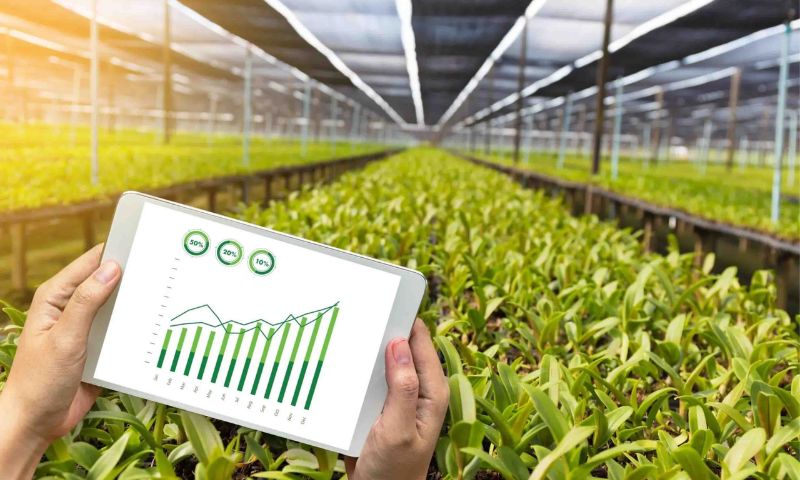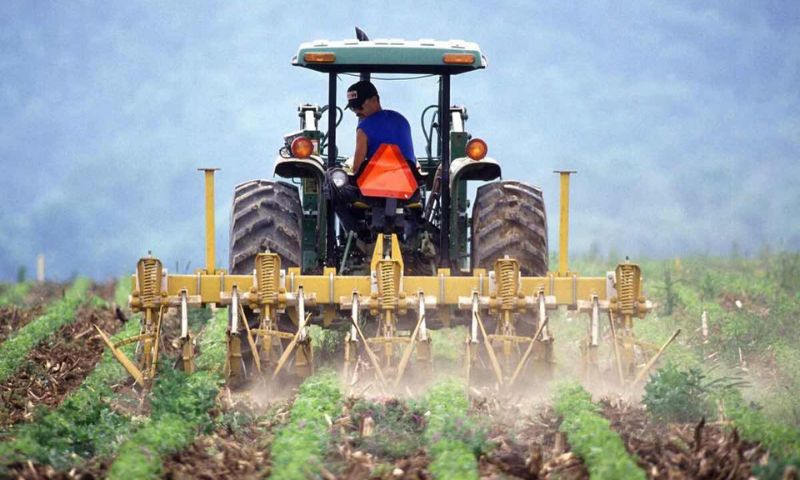Agriculture is the backbone of Pakistan’s economy, playing a pivotal role in ensuring national food security. A large portion of the population depends on farming for their livelihood, making it crucial for the country’s stability. Historically, support mechanisms like the guaranteed price for wheat have protected farmers’ economic sustainability, but the recent withdrawal of such measures has severely impacted farmers and is threatening the agricultural sector. Similar challenges loom over the sugarcane industry, as government policies have created dissatisfaction among stakeholders, while uncertainty surrounds the rice crop as well. This situation is creating a reluctance among farmers to plant wheat in the upcoming season, posing a significant risk to Pakistan’s food security. In light of these challenges, the need for direct subsidies on agricultural inputs has never been greater. By incentivizing farmers to continue wheat production, the government can safeguard both farmers’ livelihoods and the national’s food supply. A well-devised subsidy program will help reduce production costs and maintain agricultural output.

It is imperative to offer farmers subsidies on essential inputs to maintain agricultural productivity, particularly in light of the ongoing increase in production costs. Water, a vital resource for farming, has become increasingly expensive due to the soaring cost of electricity, making traditional tube wells unaffordable for many. Given the challenges faced by the power sector, subsidizing electricity is not a feasible option. Instead, introducing solar-powered tube wells can provide a sustainable solution, helping to lower water costs for farmers. In addition to water, other key inputs such as farm machinery, pesticides, seeds, and fertilizers need to be subsidized. Mechanization enhances efficiency, while quality seeds, fertilizers, and pesticides are critical for boosting yields and protecting crops from diseases. The government can assist farmers in reducing production costs, maintaining profitability, and ensuring the continued development of the agricultural sector by offering targeted subsidies for these essential inputs.
Fertilizer is an essential component of agricultural inputs. It is a prevalent practice worldwide to provide producers with assistance in obtaining fertilizers at reasonable prices. This support often takes different forms, including direct financial assistance, discounts on fertilizer prices, or voucher programs. The primary objective is to reduce the cost of fertilizers for farmers, thereby allowing them to allocate funds toward agricultural inputs that can increase crop yields and overall agricultural productivity. However, the effectiveness of these support programs can vary widely, and governments often face challenges in ensuring that the assistance reaches the intended beneficiaries efficiently while managing budgetary constraints. Balancing the need for affordable fertilizers with sustainable agricultural practices is a critical consideration in designing and implementing farmer support policies worldwide. Thus, it is important to analyze various disbursement processes practiced in the past to identify the most effective system for the future.

In Pakistan, affordability of urea has been ensured over last two decades through domestic production based on provision of low quality gas from Mari gas fields as feedstock. This has resulted in a much greater benefit for the farmers than the intended benefit in terms of the lower cost of production. The lower price of urea ranging between two to five times lower than international prices in the recent past is a testimony to the successful model through domestic production. The fertilizer industry has implemented this model effectively, which aligns with the objectives of the Fertilizer Policy 2001. However, there have been calls for shifting to a direct subsidy disbursement mechanism. While this may seem like a solution, past experiences show that the federal government has struggled to efficiently distribute direct subsidies to farmers due to the price hike of imported fertilizers in the international market. During 2016 – 2017, Kissan Package was introduced by federal government to reduce urea prices through industry-supported subsidies (Rs. 100-156) and a reduction in GST (from 17 to 2%). Although the industry passed these benefits to the farmers, it is still waiting for the disbursement of Rs. 19.2 billion in pending subsidies and approximately Rs. 70 billion in GST refunds, due to slow processing. This delay has significantly reduced the motivation for manufacturers to participate in similar schemes moving forward.
There have been suggestions to shift towards direct subsidies for farmers, largely driven by IMF pressures to eliminate indirect subsidies. However, before any major policy change, it is crucial to examine the existing challenges in direct subsidy disbursement and develop an indigenous model that can be applied uniformly across the country to benefit the entire farming community. A previous attempt to alleviate the financial burden on farmers, especially in the face of rising phosphatic fertilizer prices, faced significant execution hurdles. The Government of Punjab introduced a voucher-based, SMS-enabled direct subsidy mechanism for phosphatic fertilizers, placing vouchers inside fertilizer bags. Farmers would send the voucher code via SMS to receive payment instructions through an automated system. Despite these efforts, the system fell short of expectations. Farmers, who had already made cash payments for expensive fertilizers, were left waiting for the promised subsidy. It is believed that persistent shortage of funds had prevented many farmers from encashing the issued coupons. Notably, in Sindh, Khyber Pakhtunkhwa (KPK), and Balochistan, this subsidy was entirely unavailable to farmers, therefore various malpractices like trading of stickers were observed. Furthermore, this system placed an additional financial burden on farmers, as they had to purchase fertilizers at market rates, hoping for eventual government compensation, which often demanded a significant cash outlay upfront.
Another suggestion for direct cash subsidy to farmers based on land records on the line of BISP has been floated. This proposal also poses significant challenges in Pakistan, especially given the state of land documentation across various provinces. Except for Punjab, land records are neither fully updated nor computerized, making it difficult to accurately identify beneficiaries. Furthermore, the complex structure of farming in Pakistan, where many landowners do not actively farm themselves but lease their land to tenants, adds another layer of difficulty. In such cases, the cash subsidy may not reach the actual farmers who are directly involved in the cultivation process. Additionally, small farmers who receive direct cash payments are vulnerable to using the funds for non-agricultural purposes, given their financial pressures. This misallocation of resources forces them to eventually purchase essential inputs like fertilizers at inflated prices, often relying on loans from local middlemen (Artees). As a result, the intended benefits of the subsidy are undermined, with farmers continuing to face financial hardships and rising production costs. This highlights the need for a more targeted approach to ensure subsidies effectively support the agricultural sector.

Therefore, based on farmers experience and recent experimentation, it is evident that any knee-jerk decision on the subsidy disbursement system for short-term political gain could significantly escalate production costs for farmers. This would not only jeopardize crop yields but could also trigger far-reaching negative political repercussions for the administration responsible, as it risks undermining the agricultural sector’s stability and food security.
It is crucial to emphasize that the indirect subsidy through relatively cheaper natural gas provided as feedstock has worked well as own farmer have reaped the benefit of substantially lower prices of locally produced fertilizers, in highly volatile international market and devaluation of Pakistani currency. Today, the local urea is selling around Rs 4600 per bag cheaper than import price, besides saving foreign exchange to the tune of USD 2.7 Billion per annum. It may of interest to note that Rs. 150 billion indirect subsidy through lower feedstock gas prices by GoP is translated in to over Rs. 400 billion benefit to the farmers by the Industry on annualized basis. The point that must not be overlooked is that gas provided to the fertilizer industry is of low heating value and chemical composition best suited for fertilizer production. The industry has invested 0.5 Billion dollars for its transmission to the factory and pressure enhancement and needs to invest more to ensure sustainability of production for another ten years. Therefore, government should work on measures to sustain the domestic production of urea through low quality gas with zero investment by the government, no UFG and circular debt. This will ensure availability of affordable urea for the farmers without spending single penny.
In this regard, it is important to highlight that the gas supplied to the fertilizer industry is of lower heating value and has a chemical composition best suited for fertilizer production. The industry has invested $0.5 billion for its transmission to the factories and for pressure enhancement, and further investments are required to sustain production for the next ten years. Therefore, the government should focus on measures to maintain domestic urea production using low-quality gas without additional investment, unaccounted-for gas (UFG) losses, or adding to circular debt. This approach would ensure the availability of affordable urea for farmers without the need for government expenditure on any kind of subsidy on Urea.

